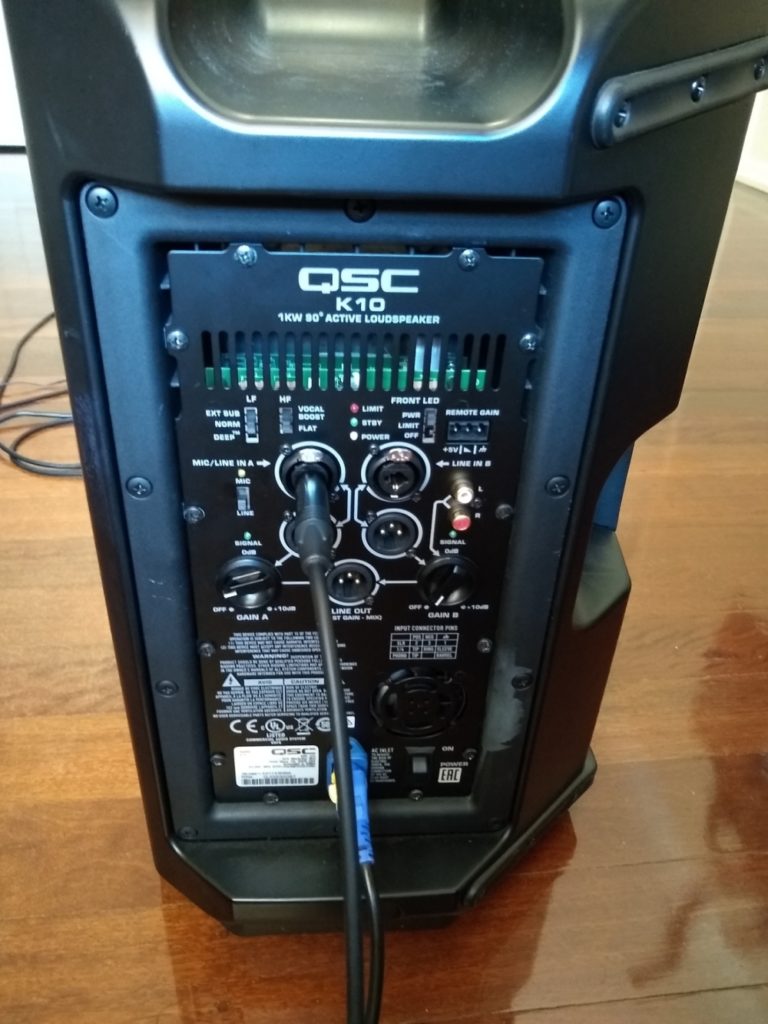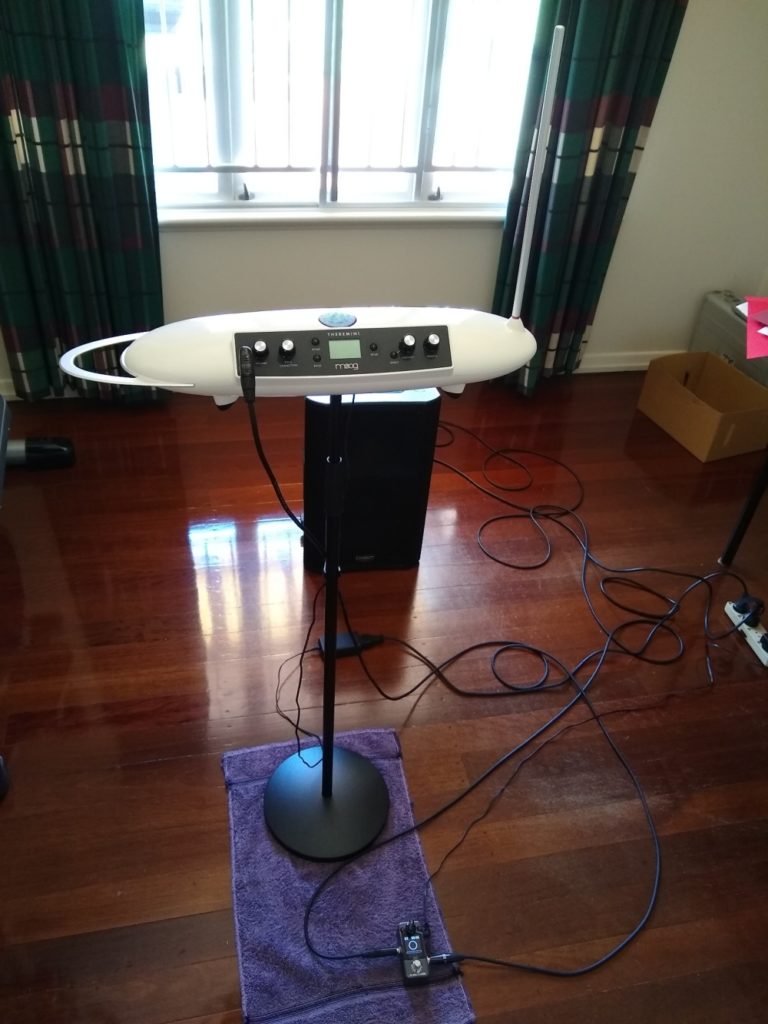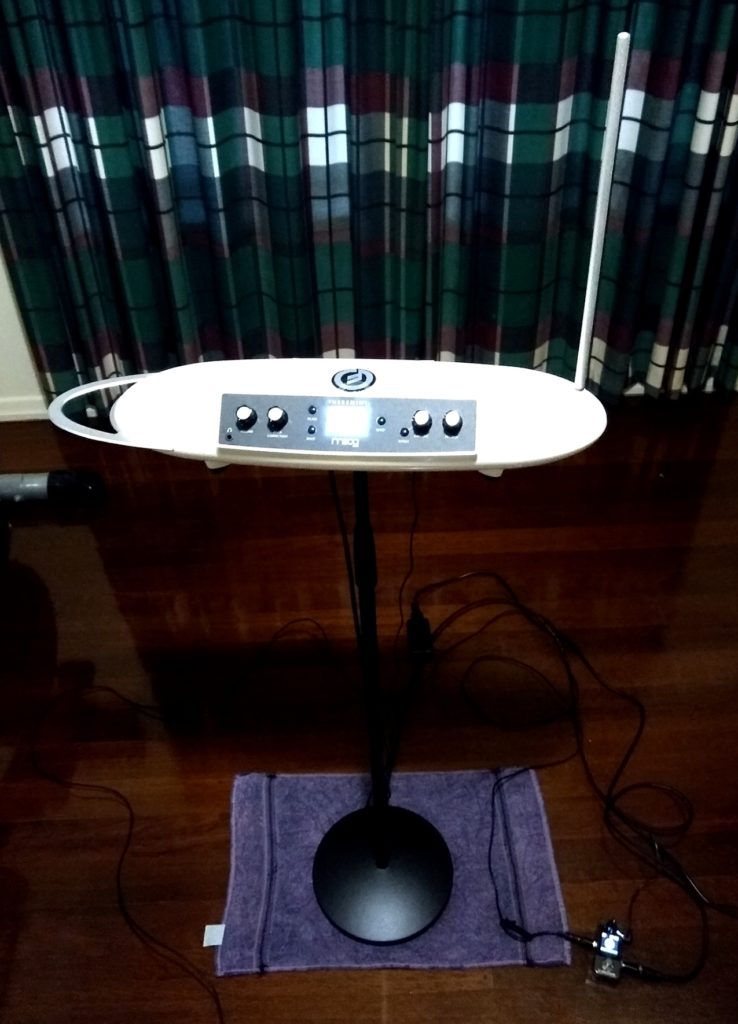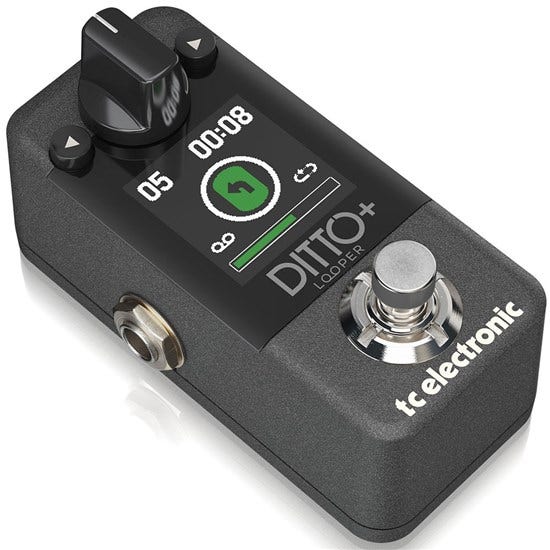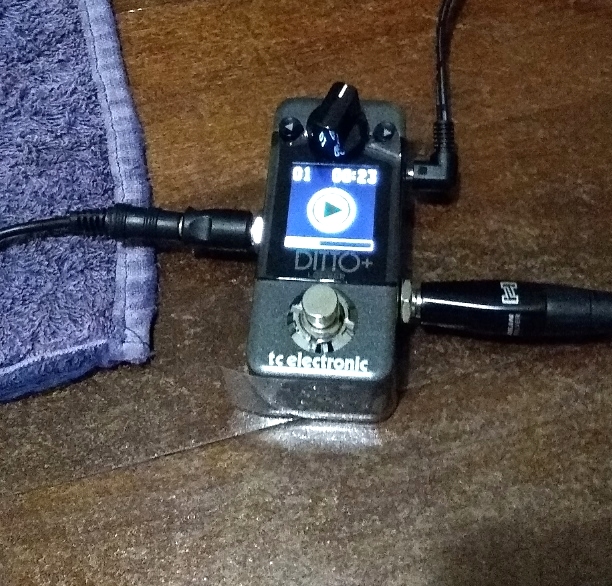I had a song stuck in my head – “Chung Kuo” by Vangelis, from his “China” album – well, more correctly the bass line (a 4 note arpeggio that is really catchy), and I set about trying to convert it into notes
I discovered D-2 A-3 A-2 C-2 more or less duplicates it, and set about practising tightly squeezed off notes using the “All Your Bass” preset, tuned to Ionian scale, in the key of C (I like this scale for some reason). It took AGES to get reliable notes that were clipped uniformly. I then used these as a loop, running roughly 30 seconds.
I made 5 copies of this loop and copied it across to separate loop folders on my Ditto+ Looper pedal, it then changed the name to BT.WAV (Backing Track) and generated a LOOP.WAV in each folder that matched the length of the bass loop – something I did not know it was going to do.
Connecting my Ditto+ back to the Theremini, I could play the Backing Track and practise over it, then when I stomped on record, I assumed it would lay down a composite LOOP.WAV that contained both the backing track and the new layer containing my noodling – alas, LOOP.WAV only contained the overlay, so I had to merge them using Audacity in post production. I also stuck together 5 versions (or movements), and did a little fade-in and fade-out to finsh.
I like that I did not need to do any actual sound altering – what you hear is what I generated live. I have a growing collection of favourite Theremini presets – downloaded and original that do lovely things with both antennae – I particularly like those that let you use the volume antennae to shape the envelope of the note as well as it’s timbre and volume.
I like this collection of stuff a lot, and will return to the project of re-creating the rest of Vangelis’ original song, which was my original intent – more work to there, but a really enjoyable recording session.
